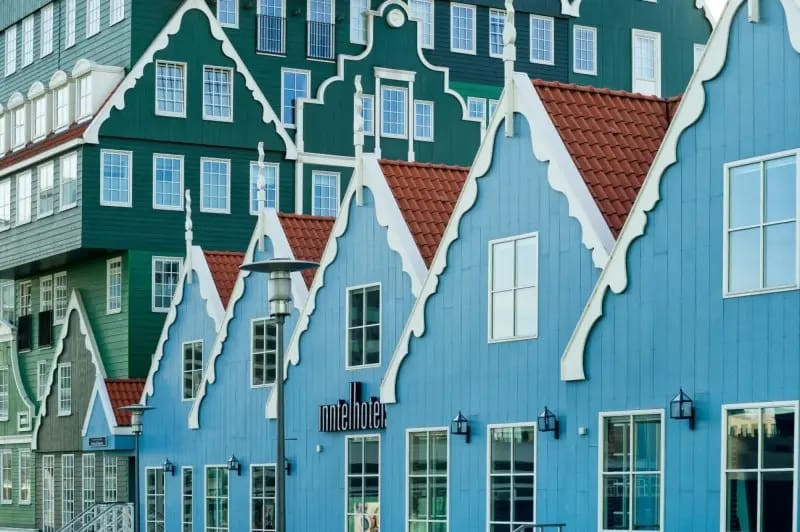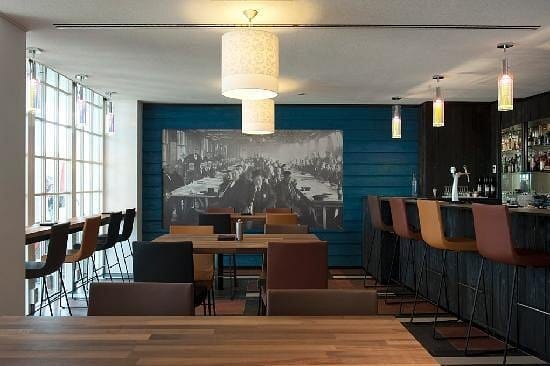If you step out of the train station in Zaandam, just north of Amsterdam, your eyes might do a double take.
Rising like a surreal layer cake is the Inntel Hotel, a 12-story building that looks like someone stacked dozens of traditional Dutch houses on top of each other and hit “save.”
While the hotel isn’t new, it’s remarkable enough that it’s always stayed in our subconscious. It’s a design strange and fascinating enough to be remembered.

Designed by architect Wilfried van Winden, the building isn’t subtle. But it is highly distinctive, and fitting for this unique Dutch city.
The design is a bold collage of 68 distinct façades, all modeled after the charming green timber homes typical of the Zaan region.

One façade, painted bright blue, nods to Monet’s time in Zaandam, where he painted “The Blue House” in 1871.
Even Zaandam’s city hall has a striking resemblance to the hotel, with the same shade of green employed.

What’s impressive is how playful and nostalgic it feels without being kitsch. It’s theatrical, sure, but it’s rooted in local tradition.
Inside, the whimsy continues, with guest rooms that echo the building’s eccentric shell.

With murals and wall coverings that are as distinctive as the exterior, the rooms and common areas make the hotel feel like a place to be discovered.

The idea is Dutch cottage meets modern comfort, with a few surprises along the way.


The hotel is part of a larger effort to revive the area and bring more attention to Zaandam’s industrial and architectural past. It succeeds by being the kind of building you can’t forget. It’s joyful, weird, and unapologetically itself.

In a world full of glass boxes and cookie-cutter hotels, the Inntel Zaandam is a standout. It’s a fascinating place to visit, and we love the unique character it brings to the city.
Rates starting at €204.85 per night.
Images © Copyright Inntel Hotels.
Nature Fact of the Day:
Octopuses have three hearts and blue blood.
Two of their hearts pump blood to the gills, while the third pumps it to the rest of the body.

Even wilder: when they swim, the heart that serves the body actually stops beating. That’s part of why octopuses prefer to crawl rather than swim, it’s less tiring.
The post Surreally Stacked, The Inntel Hotel Zaandam appeared first on Moss and Fog.
